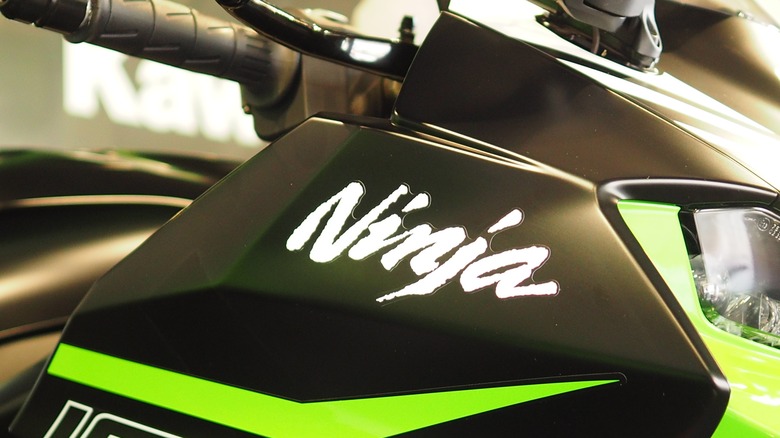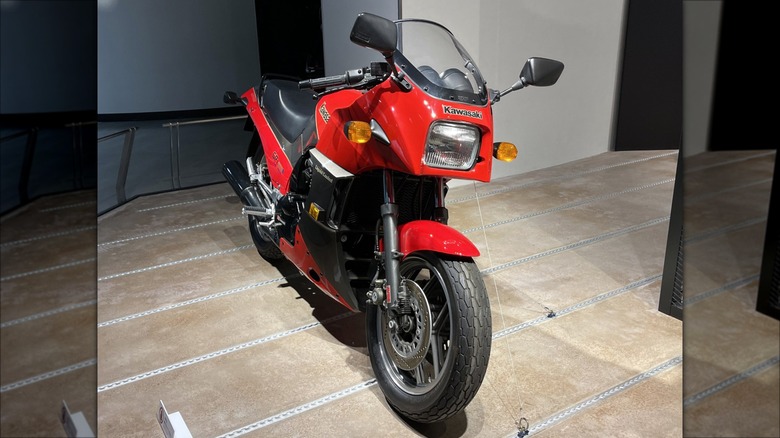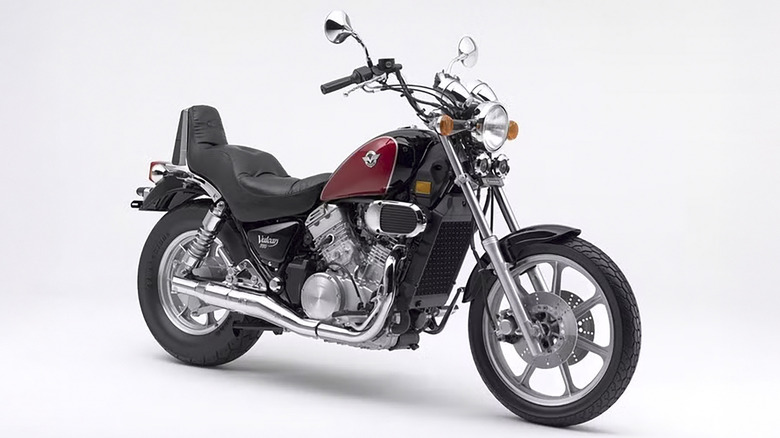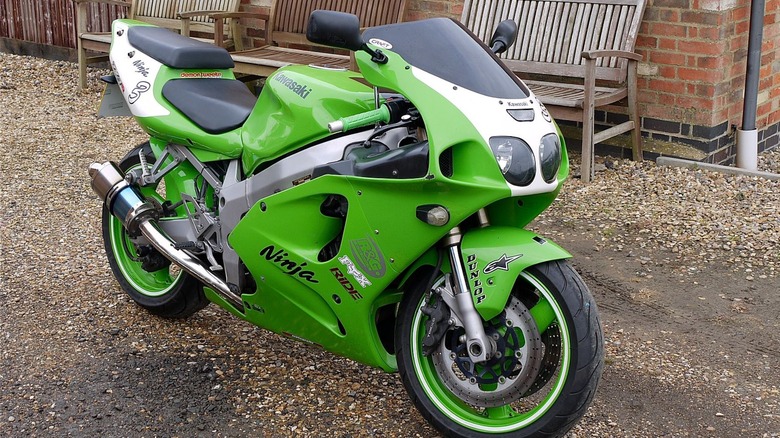3 Legendary Kawasaki Motorcycles From The 1980s
Though the company's name is linked to air transportation, shipbuilding, robotics, and so much more, Kawasaki has largely become synonymous with its motorcycles. In 1962, Kawasaki joined forces with Meguro Manufacturing, and together created the first-ever Kawasaki motorcycle: the single-cylinder, two-stroke Kawasaki B8. Less than a year after the merger, Kawasaki took control of the company and formed the Kawasaki Motorcycle Co., Ltd.
Since then, Kawasaki has produced over 100 different motorcycles, with 42 different models currently available for purchase on the company's website. It's worth noting that Kawasaki's success didn't happen overnight: The company had to claw and scratch its way to success in motorcycle manufacturing. Kawasaki was able to accomplish this feat by making a name for itself in the 1980s with some of the most famous motorcycles the world has ever seen.
Bikes like the GPZ900R, the Vulcan 700/750, and the Ninja ZX-7R helped create a reputation for Kawasaki that has not been duplicated in the 60+ years that the brand has been manufacturing motorcycles.
Kawasaki GPZ900R
While Kawasaki had been producing motorcycles for 20+ years, the introduction of the four-stroke, four-cylinder, liquid-cooled Kawasaki GPZ900R in 1984 did wonders for the company's reputation as a bike manufacturer. The GPZ900R was introduced to the world at the 1983 Paris Salon, an annual French art exhibition dating back to the 17th century. Later that year, Kawasaki dazzled spectators at a press conference in California, informing the world that it would begin selling this model globally.
To improve the bike's image and make it more appealing to the North American market, Kawasaki decided to add another word to the motorcycle's title: Thus, the "Ninja" brand was born. Even today, the company sells motorcycles under the Ninja name, with 14 different Ninja variants currently available for purchase on the Kawasaki website.
Upon its initial release, the Kawasaki Ninja GPZ900R was an immediate hit. The company was able to sell over 70,000 GPZ900R units in the first 13 years after the bike's release. It was even featured in the 1980s classic Top Gun because it was considered the fastest motorcycle in production when the movie was being made. Kawasaki wound up producing that exact model of GPZ900Rs for 19 years before production in Japan stopped in 2003. Still, the iconic GPZ900R and Ninja brand lives on today as one of the most recognizable motorcycles ever made.
[Featured image via Wikimedia Commons | Cropped and scaled | CC BY-SA 4.0]
The Kawasaki Vulcan 700/750
Around the same time as the GPZ900R, Kawasaki began production on another motorcycle that would become one of the company's most famous products of the 1980s: the Kawasaki Vulcan 700, otherwise known as the VN700. The Vulcan 700 made history because it was the first cruiser motorcycle ever produced by a Japanese manufacturer that also came equipped with a V-twin engine.
The first VN700 was produced in Japan in 1985, and was sold in the U.S. as a 699cc bike to avoid tariffs imposed on Japanese motorcycles that exceeded 750cc of displacement. Shortly after that, Kawasaki rebranded the bike as the Vulcan 750 when it began manufacturing this model as a 750cc motorcycle in Lincoln, Nebraska in 1986 — allowing Kawasaki to sidestep the aforementioned tariffs.
Once the Vulcan 700/750 brand was created, it quickly picked up steam, with production lasting for 20+ years before Kawasaki elected to discontinue the motorcycle in 2006. Still, a 20-year run for a product that remained virtually unchanged the entire time it was made was a huge win for Kawasaki, and only helped the company further establish itself as a titan in the motorcycle space.
The Kawasaki Ninja ZX-7R
The last iconic Kawasaki bike of the '80s didn't come out until the end of the decade, when the company released the first-ever Ninja ZX in 1989. The four-stroke, traverse four-cylinder, water-cooled bike told the world that Kawasaki was trying to become a leading sports bike motorcycle producer.
The year before building the first Ninja ZX-7R, Kawasaki had a very poor showing at the inaugural 1988 FIM World Superbike Championship, finishing in fourth place among six qualifying manufacturers behind Honda, Bimota-Yamaha, and Yamaha. Kawasaki spent the next year building the ultimate sports racing motorcycle. The bike was outfitted with a new 6.4-liter airbox and 36mm downdraft carburetors, which helped the ZX-7R achieve a max of 105.3 horsepower and a top speed of 152.5 mph.
These upgrades allowed Kawasaki to almost double its point output in the 1989 FIM World Superbike Championship, going from 92 points in the previous year to 166 points in 1989. Kawasaki saw further improvement the next year when the team recorded 302 points at the 1990 World Championship. By 1992, Kawasaki was consistently finishing in the top two among manufacturers at the Superbike Championships.
Kawasaki released the last updated model of the ZX-7 in 1996 before ending production of the motorcycle entirely in 2003. However, the bike's iconic green paint job and performance are still remembered amongst cyclists today.
[Featured image via Wikimedia Commons | Cropped and scaled | CC BY 2.0]



